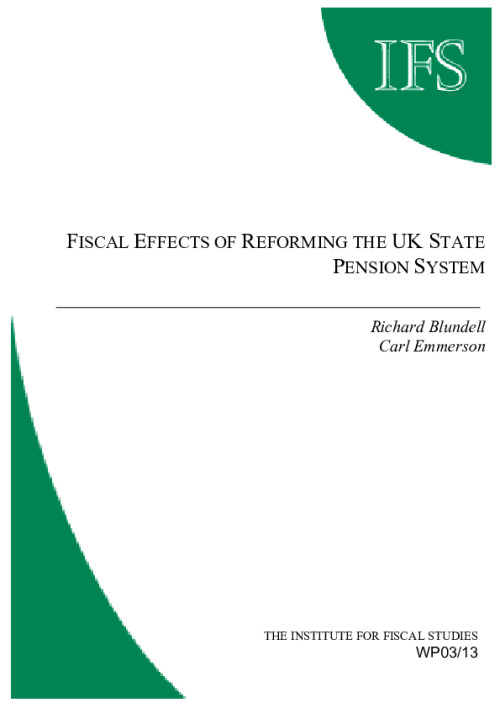The fiscal and distributive impacts of three reforms to the social security pension system in the UK are evaluated. All three reforms are designed to increase the retirement age by changing the incentive structure underlying the pension system. The first increases the state pension age by three years. The second introduces an actuarial adjustment to retirement both before and after age sixty five allowing deferral to age 70. The final reform adapts the second reform to include a cap and a floor so as to mirror more closely the existing state pension scheme in the UK. Using a transition model of retirement, the simulations show that increasing the state pension age leads to a lower level of expenditure on the state pension, which is only partially offset through increased state spending on both means-tested income support and disability benefit (invalidity benefit). Employee national insurance receipts are also directly increased through the increase in the state pension age. The increase in retirement ages would also lead to an increase in government revenues arising from increased income tax and employee and employer national insurance contributions. As a result there would be lower levels of government borrowing (or larger government surpluses) than under the base system.









